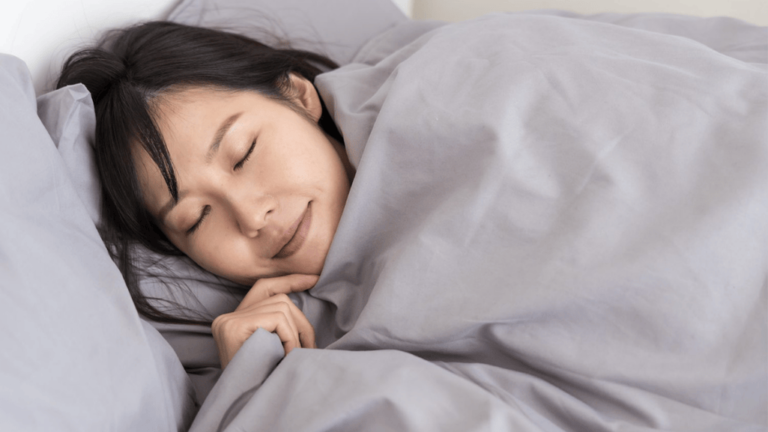From day one, keeping your baby safe while they sleep is a top priority for parents. The big question becomes “when can babies sleep with a pillow?” Knowing about baby pillow safety helps make sure your little one sleeps securely. It’s important to follow sleep safety guidelines for babies and know the correct time for them to start using a pillow.
Adding a pillow to a baby’s crib is about more than comfort. It’s also about safety. Research and advice from experts are crucial in deciding when and how to safely introduce a pillow. We’re here to look at the details of when it’s safe for babies to use a pillow. We rely on evidence and expert guidance to avoid any risks.
Key Takeaways
- Knowing the right age to introduce a pillow is key for baby pillow safety.
- It’s vital to follow infant sleep safety guidelines to prevent sleep-related dangers.
- Discussing when babies can sleep with a pillow is important for their safety.
- Experts do not recommend pillows in cribs for infants because of safety risks.
- Being informed about sleep safety guidelines is the first step in safe baby pillow use.
The Basics of Baby Pillow Safety
Keeping babies safe while they sleep is a top priority for parents and caregivers. The discussion about baby pillow safety is key. It helps us understand dangers and follow important rules. This way, we can lower the chance of Sudden Infant Death Syndrome (SIDS) and keep sleeping spaces for babies safe.
Understanding the Risks of Suffocation and SIDS
Pillows in a baby’s bed can greatly increase the risk of suffocation. They can block a baby’s breathing. Also, soft bedding like pillows can raise the chance of SIDS risk. SIDS is when a healthy baby dies suddenly and without a clear reason. Knowing these dangers is the first step to safer sleep.
Current Safe Sleep Guidelines for Infants
The American Academy of Pediatrics has set safe sleep guidelines. These rules aim to minimize dangers for babies, including SIDS. They suggest babies should sleep on their backs, on a firm surface, without soft bedding like pillows in the crib.
Creating a Safe Sleep Environment for Your Baby
To promote baby pillow safety, a safe sleep environment is crucial. Use a crib or bassinet that’s up to date with safety standards. Make sure the mattress fits well and avoid loose bedding or stuffed animals. Keeping the sleep area simple can lower suffocation risks, helping prevent SIDS.
When Can Babies Sleep with a Pillow?
Many parents wonder, “when can babies sleep with a pillow?” Introducing a pillow to a baby’s crib matters a lot. It should happen at the appropriate age for pillow use. This is to keep the child safe. Most doctors say wait until a baby is 18-24 months old. Before this age, babies can’t move away from things that might block their breathing.
Adding a pillow too soon might make it hard for babies to breathe. This could happen if their face presses against it.
- It’s essential to wait until the baby can move around the crib safely. This prevents dangers.
- Look at how your child is growing to decide when a pillow is safe for them.
- Talking to a pediatrician for advice on pillows is the safest way. They know your baby’s growth and skills.
We must consider several signs of growth to know the appropriate age for pillow use. These include the baby’s skill to push up with their hands and turn their head easily. If a baby can do these things, they might be ready for a pillow. Still, being extra careful is key.
When thinking about introducing pillows to babies, choose a firm, flat one. It should be made just for toddlers. This ensures it’s not too soft, which could be a suffocation risk. Keeping your baby safe while they sleep is crucial. Always follow safety rules when adding a pillow to their crib.
The Dangers of Introducing Pillows Too Early
Adding comfort items like pillows for infants needs extra care due to sleep safety. Though adults find pillows cozy and supportive, they’re risky for babies if used too early. Knowing these dangers helps keep babies safe from early pillow use’s harsh effects.
Risk Factors Associated with Early Pillow Use in Newborns
A newborn’s sleep area must be safe. Early pillow use brings dangers, such as suffocation risks and the chance of flat head syndrome. Pillows can cause accidental choking and Sudden Infant Death Syndrome (SIDS), especially since babies can’t move well yet.
Experts urge parents to keep cribs simple, without pillows, toys, or loose bedding. The American Academy of Pediatrics recommends this to avoid risks during a baby’s sleep. This setup is key for keeping sleeping babies safe.
Why Babies Don’t Need the Same Comfort Items as Adults
Babies and adults need different things for comfort. Little ones don’t see pillows as comfy because they’re best with a flat, steady place to sleep. Using adult pillows can be risky and mess with a baby’s needed safe sleep area.
- Babies’ and adults’ needs differ, with safety first for the youngest.
- A firm mattress alone perfectly supports baby heads and necks, making pillows unnecessary.
- Avoiding pillows early on helps ensure a safer sleep space and better health for babies.
Optimal Timing for Pillow Introduction to Babies
Making the right sleep choices is vital for a child’s growth and safety. Knowing when to introduce a pillow is crucial as they move from a crib to a toddler bed. But when is the right moment?
Transitioning from Crib to Toddler Bed and Pillow Considerations
Moving to a toddler bed shows your child might be ready for a pillow. It’s about more than age. You need to see if your child’s sleep habits and growth suggest they can safely use a pillow. This change usually happens when they are 18-36 months old.
- Look at how your toddler sleeps, like if they move well or sleep in certain positions.
- Pick a pillow that’s the right size and firmness for your child; it should offer proper support.
- Opt for hypoallergenic materials to decrease allergy risks.
Signs That Your Toddler May Be Ready for a Pillow
Watching for signs your toddler is ready for a pillow helps you know when to add one to their bed. Pay attention to how they sleep and feel. Here are signs that your toddler is ready for this step:
- They rest their head on soft items or blankets while sleeping.
- They seem comfortable and don’t show signs of neck strain from lying flat.
- They can follow simple safety rules, like keeping their head clear when sleeping.
In the end, thinking about pillows for toddlers might be scary, but with careful watching and smart choices, you can make it a good experience. Always focus on safety, the right fit, and your child’s signals to make sure the pillow is a happy addition to their sleeping routine.
Selecting the Right Pillow for Your Toddler
Getting a good night’s sleep is crucial for your little one. So, selecting the right pillow is key. The move from a crib to a toddler bed is big. You need the right pillow to support this change. It’s important to know why pillows for toddlers are different from adult pillows. This ensures your child’s comfort and safety.
Features of a Toddler-Appropriate Pillow
When looking at toddler-appropriate pillows, some features are very important:
- The pillow size should fit your child’s head and neck well. It should not be too big.
- Look for materials that are safe for your child. They should be hypoallergenic and free from harmful chemicals.
- The pillow should be firm enough. It shouldn’t let the head sink in too much, which is dangerous.
- Choose pillows with easy-to-clean fabrics. This helps keep things hygienic and free from allergens.
Why Adult-Sized Pillows Are Not Suitable for Toddlers
Using an adult-sized pillow for your toddler may seem like a good idea, but it’s not:
- A big pillow can make your toddler’s spine align wrongly. This can be uncomfortable and bad for their posture.
- Too much material in a big pillow can be a suffocation hazard for young toddlers.
- Adult pillows might not have the right support for toddlers. They can be too soft or too hard.
In conclusion, selecting the right pillow for your toddler is very important. Make sure you choose one that fits the special needs of a toddler. Avoid just using a smaller adult-sized pillow. This helps your toddler sleep well and safely. It makes moving from a crib to a toddler bed a happy and comfy change.
Safe Sleep Tips for Toddlers
Making sure toddlers sleep safely is very important for their health. By using promoting safe sleep tips and following advice from experts, parents and caregivers can really help. Reducing SIDS risk in toddlers is key. It is vital to know and use these tips to keep your child safe while they sleep.
- Establish a consistent bedtime routine to signal to your toddler that it’s time to wind down for sleep.
- Keep the sleep environment at a comfortable temperature, avoiding overheating which is a known risk factor for SIDS.
- Ensure the toddler’s sleeping space is free from loose bedding, pillows, stuffed animals, and bumpers to minimize suffocation hazards.
- Maintain a crib or toddler bed with a firm mattress and a fitted sheet as a standard sleep practice.
- Use a wearable blanket or sleep sack as an alternative to loose blankets to keep your toddler warm without the risk of head covering.
- Opt for a minimalist approach within the crib or bed, which aligns with expert guidelines for reducing SIDS risk.
These steps are about more than just comfort. They’re to keep your toddler safe while they sleep. By putting into practice these safe sleep tips for toddlers, you are creating a safe, calm place for sleep. This reduces the reducing the risk of SIDS and helps your child stay healthy. Every detail matters in keeping our little ones safe while they dream.
Common Misconceptions about Pillow Use in Infant Sleep
Many parents hear pillow use misconceptions about baby sleep. Some believe pillows add to their baby’s sleep comfort. But, these beliefs are often wrong. The truth is, safe infant sleep does not need pillows. This is important for SIDS prevention and pillow safety.
Debunking Myths: The Truth About Baby Sleep Comfort
Some myths make people think soft pillows mean better sleep for babies. But babies sleep best on a firm and flat surface. Debunking sleep-related myths is key. It helps keep babies safe by sticking to simple, safe sleep practices.
Addressing the Role of SIDS Prevention Tips in Pillow Safety
Talking about pillow safety means also talking about SIDS prevention. Health groups work hard to teach about SIDS and pillow risks. Keeping pillows out of a baby’s crib helps prevent SIDS. Together, these rules help make sleep safer for babies. Our goal is safer sleeping for our little ones by debunking sleep-related myths.
Monitoring Baby’s Sleep: What Parents Need to Know
Understanding and monitoring baby’s sleep is crucial for new parents. It’s about the safety and development of their child. Knowing the sleep patterns in the first year helps ease parental worries. It also offers insights into normal infant behavior. Many parents wonder about the right time to talk to a doctor about their baby’s sleep. Thus, seeking pediatric advice on baby sleep is very helpful.
Milestones and Sleep Patterns in Baby’s First Year
Your baby’s sleep journey has important baby sleep milestones. At first, newborns sleep in short periods, day and night. As they grow, their sleep patterns change. They start sleeping longer at night and nap more predictably during the day.
It’s good to notice things like sleeping through the night. Or starting a regular nap schedule. These are signs of your baby’s growth.
When to Seek Pediatric Advice Regarding Baby Sleep
While variations in infant sleep are common, sometimes you may need to ask for help. If your baby has trouble sleeping or their sleep patterns change a lot, it could mean something. Also, if your baby isn’t meeting sleep milestones as expected, it’s a good idea to talk to a doctor. They can offer advice on what to do next.
- Unusual fussiness or irritability associated with sleep.
- Changes in breathing patterns during sleep.
- Persistent difficulty with sleeping through the night beyond the age-appropriate period.
- Excessive sleepiness or lack of alertness during the day.
Keeping an eye on your baby’s sleep is both reassuring and practical. By being aware of your baby’s sleep patterns and milestones, and knowing when to ask for advice, you can create a safe, healthy sleep setup for your baby.
The Role of Pediatricians in Educating Parents on Baby Pillow Use
Pediatricians play a key role in guiding parents on using pillows for their babies. They use their deep knowledge of medical research and safety to help. This ensures that parents can create a safe place for their babies to sleep.
Insights from Dr. Harvey Karp on Infant Sleep Needs
Dr. Harvey Karp is a leading expert in child care. He shares valuable insights on infant sleep that shape modern parenting. He focuses on the safety of sleep and advises against pillows for very young children.
The Impact of Professional Recommendations on Safe Sleep Practices
Advice from experts like Dr. Karp deeply influences how parents put their babies to sleep safely. Pediatricians provide clear advice and play a big role in changing how parents act. This helps reduce accidents during sleep.
- Understanding the developmental needs of infants for safe sleep
- Recognizing the potential hazards associated with early pillow use
- Applying professional advice to establish protective sleep measures
Pediatricians are important in teaching parents about raising children healthily and safely. They connect medical concepts with what parents can do every day.
Conclusion
Early childhood is a vital time, and using safe baby pillows is key. This is about keeping little ones safe while they sleep. It’s crucial we stick to safety steps for using pillows. Doing so helps lower the risk of SIDS greatly.
We talked about the right time and way to start using a pillow. These tips come from experts in child care. They help make sure your baby’s sleep is safe and sound. It’s all about creating a cozy and secure sleep spot.
We all want to make a loving and safe space for kids. The articles have shared important tips to help with that. Let’s use what we’ve learned to make sleeping safe. This way, our children can grow up healthy and happy.













